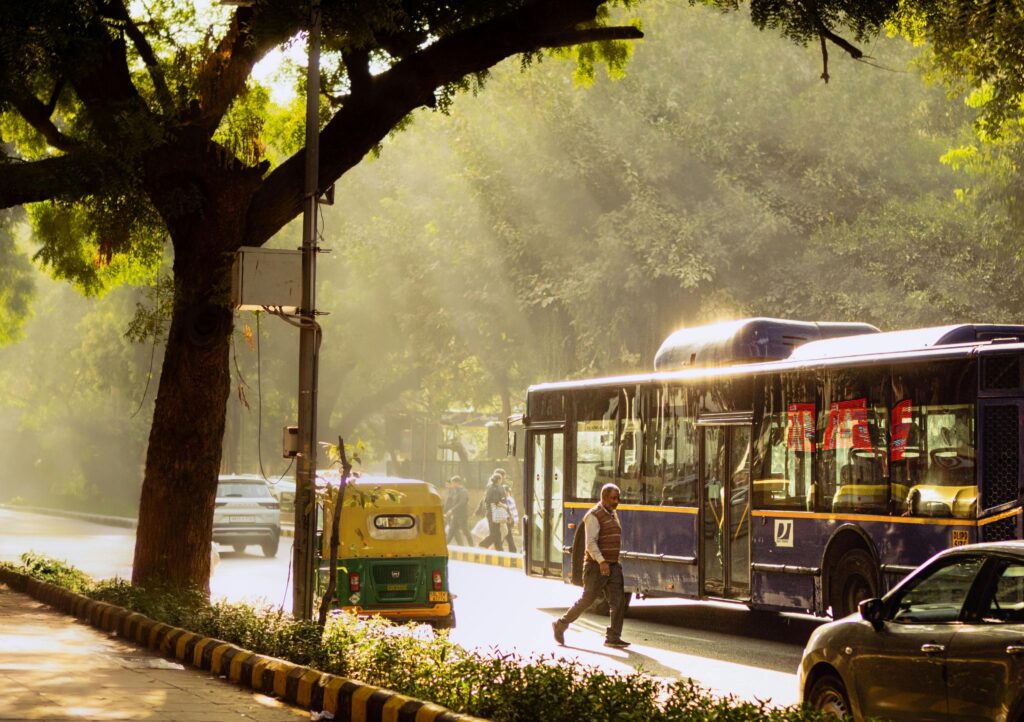India’s Circular Shift in Waste and Wastewater
India accelerates climate action by transforming waste and wastewater into circular economy engines for urban sustainability.
As we approach the Sustainable Development Goals (SDG) deadline of 2030, the next five years must represent a fifth-gear acceleration of climate action worldwide. For the Global South, the period from 2025 to 2030 will be a defining window to build a strong foundation and rapidly accelerate the on-the-ground delivery of climate action, particularly given the robust ecosystem developed over the past decade.
In India, particularly, the 2015 SDG announcement coincided with a wave of ambitious climate initiatives launched by the newly elected government in 2014. Since then, tremendous strides have been made across various sectors, laying the groundwork for bold, strategic action in the years ahead. Decisive climate planning was renewed during this period, with cities now at the forefront, managing an ever-growing portfolio of climate-related interventions with more support than ever.

While India’s climate action has spanned all critical sectors, including energy, transport, industry, agriculture, and forestry, one sector seeing unparalleled attention, growth, and progress is municipal solid waste and wastewater management. This sector accounts for 3.7% of the national greenhouse gas inventory. While this may seem modest at first, deeper investigation reveals the sector’s outsized potential impact on emissions, public health, and the overall urban sustainability agenda.
With rising waste generation driven by changing lifestyles and rapid urbanisation, this sector is becoming increasingly critical in India’s fight against climate change. Waste sector emissions in India grew at a compound annual growth rate of 4.2% between 2005–2015, as per the Ministry of Housing and Urban Affairs. What’s even more critical is that most emissions from the waste sector come in the form of methane, which has 86 times the global warming potential of carbon dioxide over a 20-year timescale. Approximately 15% of India’s methane emissions come from the waste sector.
Unlike other sectors, where governance is spread across multiple institutions, cities have direct control over waste management, making it a priority for climate action that must be addressed with urgency and clarity.
Approximately 15% of India’s methane emissions come from the waste sector.
Over the past decade, India has made remarkable progress in this space. In 2014, the Indian government launched two landmark missions: the Swachh Bharat Mission (Urban) and the Atal Mission for Rejuvenation and Urban Transformation (AMRUT), aimed at improving solid waste and wastewater management in cities. At the time, waste processing capacity stood at just 18%, and operational wastewater treatment as well as access to sewer systems in urban areas were about 30%. These missions tackled foundational challenges, scaled infrastructure, and accelerated capacity building through a mission-driven approach.
The second phase of these missions, launched in 2021, has further amplified these efforts. Today, India’s waste processing capacity has quadrupled. Wastewater treatment and sewer networks have both grown by about 10% in just five years, despite being highly cost- and time-intensive infrastructure projects. Importantly, these advancements go beyond treatment and disposal. They represent a paradigm shift toward recycling, resource recovery, and revenue generation from waste streams, marking a strong transition toward circular economy models.
For example, the Indore Municipal Corporation, having set up Asia’s largest bio-compressed natural gas (bio-CNG) plant, processes its organic waste and generates revenue from the bio-CNG produced, used as transport fuel for city buses. The model provides a royalty of $300,000 to the Indore Municipal Corporation. In Surat, the city corporation, in close collaboration with industries, established a wastewater treatment plant to supply industrial-grade water, reducing dependency on groundwater and providing more potable water to households. These examples reflect the true essence of a circular economy, where the approach is to maximise resource use to its highest potential.

A particularly noteworthy development in the circular economy space has been the launch of a dedicated circular economy initiative by India’s apex policy think tank, NITI Aayog, laying the foundation for a mission-mode approach toward achieving a circular economy. It sets clear national and state-level targets and outlines actionable steps for various sectors and stakeholders to accelerate value-creation from waste. Through a series of detailed sectoral reports covering 11 key areas, the initiative quantified the economic opportunity of circular economy models in India and laid out a clear roadmap for achieving these ambitions. With this, India’s intent to close the loop across sectors gained stronger focus and renewed momentum. As per a report published by the Ministry of Housing and Urban Affairs, India has the potential to unlock approximately $3 billion in annual economic value through the adoption of circular economy models in the solid waste and wastewater sectors.
This includes $1.7 billion from municipal solid waste and $1.2 billion from wastewater and sludge. A dedicated investment of $1.2 billion has been committed under the national GOBARdhan scheme to establish 500 new waste processing plants for the generation of bio-CNG, with a target of integrating 5% of India’s energy mix by 2028–29.
As per a report published by the Ministry of Housing and Urban Affairs, India has the potential to unlock approximately $3 billion in annual economic value through the adoption of circular economy models in the solid waste and wastewater sectors.
It is important to note that these efforts collectively have addressed what could have been major roadblocks on India’s path to a circular economy. A successful circular economy requires an enabling ecosystem, supportive policies, technical capacity, adequate financing, and robust monitoring. Each of these aspects has been thoughtfully planned in India’s waste and wastewater sectors, backed by the strategic use of digital technologies to monitor progress across cities.
Take, for instance, the data infrastructure now in place, the Swachh Survekshan, a nationwide annual cleanliness and waste management survey conducted across all cities, providing a comprehensive record of city-level efforts. Beyond rewarding performance, it enables city, state, and national governments to track progress, assess speed, and identify areas for acceleration. Before 2014, such granular datasets were virtually non-existent, limiting cities’ ability to make informed, data-driven decisions. Similarly, under the AMRUT mission, the Ministry has established a centralised mission progress dashboard for wastewater projects. This dashboard captures real-time updates from cities across India, enabling the government to monitor projects in the pipeline, under implementation, or completed. It improves performance tracking, fund utilisation, and project management.

Building on a strong foundation of governance, financing, and mission-driven momentum, the delivery of complex infrastructure such as biomethanation plants and sewage treatment facilities continues to advance but often faces execution hurdles at the local level. These hurdles are not always due to lack of intent or funding but often arise from the need for deeper institutional capacity, streamlined coordination, and hands-on technical support within city systems. Access to finance is improving, but the true key lies in empowering local institutions with the tools, data, and expertise needed to act with clarity and speed. This is where organisations like C40 Cities step in, bridging global best practices with local realities, facilitating peer learning, and enabling climate-smart decision-making on the ground.
If India is to power a truly circular future in the waste and wastewater sectors, the focus must now shift from policy to performance, from ambition to acceleration.
The momentum is real, but completing the circle will require staying on course, scaling what works, and bringing every city along the journey.
